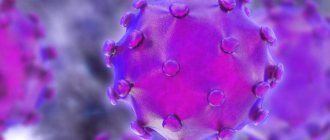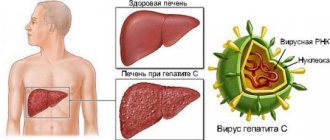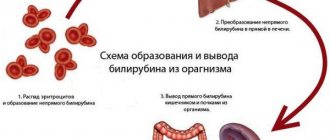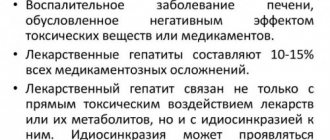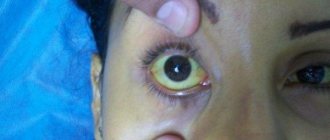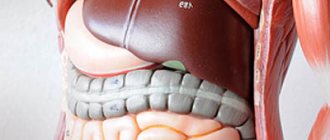One day I turned as yellow as a lemon.
It was a cold January 2000. I woke up with chills, looked in the mirror and was stunned: the whites of my eyes turned into “yolks”, and my skin acquired a cheerful shade of citrus fruit. A terrible hydrogen sulfide belch also appeared, and I realized that I urgently needed to see a doctor.
Go to the doctor
Our articles are written with love for evidence-based medicine. We cite reputable sources and seek comments from reputable doctors. But remember: responsibility for your health lies with you and your doctor. We do not write prescriptions, we give recommendations. Whether you rely on our point of view or not is up to you.
How I was diagnosed
The local therapist immediately called an ambulance, which took me to the city infectious diseases hospital, to the ward with the same “fruits”. Then a blood test and diagnosis: viral hepatitis C.
I won’t say that the news about hepatitis shocked me. It just so happened: reckless youth in the dashing nineties. I couldn’t let the heroin wave pass me by - I got completely screwed. At that time, I had already had more than two years of “experience.” And although there was still money for a new syringe, the use of common utensils to prepare the potion for use occurred sporadically. Back then I couldn’t believe it was so dangerous. I still have no idea at what point I caught the virus. But if it’s through drugs, there’s no option.
Features of the disease
Hepatitis C occurs only in humans, and infection also occurs through contact with contaminated blood or body fluids. The widespread spread of the disease is facilitated by the resistance of the pathogen in the external environment.
Until recently, it was believed that the pathogen remained contagious for no more than 5 days at room temperature. But it has now been established that the virus is contagious for one and a half months and slightly less if the temperature rises above 20°C. The causative agent of hepatitis C is not harmed by freezing. Moreover, the risk of infection remains after defrosting.
Dried biological fluids (including semen, menstrual fluid) also serve as a source of infection.
However, the virus is quickly destroyed by standard disinfection and sterilization methods. In this regard, treatment with ultraviolet light, ethanol (a solution with a 70% concentration), miramistin and other antiseptic liquids is effective.
Even experienced hepatologists find it difficult to list the symptoms that distinguish hepatitis C from other, much more common and harmless diseases. In adults, signs of pathology increase gradually.
Men and women note:
- general malaise resembling intoxication;
- disorders caused by disturbances in the production of liver enzymes, bile secretion (diarrhea, loss of appetite, flatulence, nausea, unpleasant taste in the mouth);
- skin rashes (papules, vesicles, manifestations of urticaria);
- extremely rarely - jaundice;
- feeling of discomfort and distension in the liver area;
- low-grade fever.
In severe cases of viral infection, extrahepatic manifestations of the disease may develop.
Diagnose the presence of:
- endocrine disorders, usually associated with a disorder of the secretory activity of the thyroid gland;
- dysuric disorders associated with kidney damage;
- cardiovascular and rheumatoid pathologies caused by cryoglobulinemia.
In children, signs of hepatitis C are often more pronounced. Often the disease manifests itself in the form of jaundice, and digestive disorders are more pronounced. At an early age, a deterioration in appetite is accompanied by a lag in physical development, symptoms of vitamin deficiency, and a deficiency of basic macro- and microelements.
What is viral hepatitis C
Hepatitis C is a liver disease caused by the hepatitis C virus. The disease can occur in both acute and chronic forms.
Hepatitis C is one of the main causes of liver cancer. Chronic inflammation provokes damage to this organ, which often leads to malignant degeneration of cells.
The hepatitis C virus is transmitted through blood. Transmission is possible through injecting drug use, during medical procedures, including transfusion of contaminated blood, and in rare cases through sexual contact.
In 2022, hepatitis C was detected in 45 thousand Russians. In total, this disease in our country affects, according to various estimates, from 2.2 to 4.9 million people. 70% of them learned about their diagnosis by accident.
The attending physician’s lecture about the “gentle killer,” cirrhosis and other delights of this incurable, according to the lecturer, disease did not impress me at all. At the age of 25, it wasn’t that I didn’t believe, but rather, I didn’t see anything terrible in the fact that I would die someday later. And this “later” will not happen tomorrow or even the day after tomorrow. And if it’s “incurable,” then what’s the point of reflecting?
With these thoughts, I was discharged two weeks later, having removed all the symptoms of acute hepatitis with the help of droppers, injections and tablets. With the discharge, I went to the infectious disease specialist at my place of residence, and she registered me. She ordered me to get tested every six months. On this we parted ways.
For the next ten years I hardly remembered my problem. My head fell into place: I settled down, changed my lifestyle, got married. My wife found out about my virus in the first days of our acquaintance. Being an educated and sensible person, she took this news adequately. In the future, we did not focus on this point. The impact of the disease on our life together was manifested only in the need to use condoms, since the risk of transmitting the virus to a woman during unprotected sexual intercourse is quite high, 5–7%. As for the rest, hepatitis did not remind me of itself.
At some point, I noticed that I still knew exactly where my liver was located. Any increased physical activity led to a feeling of bloating and heaviness in the right hypochondrium. Since bad habits in the form of alcohol were still present in my life, I began to notice that hangovers were becoming more severe and were accompanied by a bitter taste in my mouth. After some time, similar symptoms began to be caused by banal overeating. I again realized that I urgently needed to see a doctor.
WHO activities
In May 2016, the World Health Assembly adopted the first Global Health Sector Strategy on Viral Hepatitis 2016–2021. It highlights the critical role of universal health coverage and aligns the strategy's objectives with those of the Sustainable Development Goals. The main goal of the strategy is to eliminate viral hepatitis as a public health problem. This is reflected in global targets to reduce the number of new cases of viral hepatitis infection by 90% and mortality from viral hepatitis by 65% by 2030. The strategy sets out the measures that countries and the WHO Secretariat must take to achieve these goals.
To support countries in achieving global hepatitis targets under the 2030 Agenda for Sustainable Development, WHO is working in the following areas:
- raising awareness, facilitating partnerships and mobilizing resources;
- developing evidence-based policy and collecting data to inform action;
- improving health equity in the hepatitis response;
- prevention of transmission of infection;
- expanding coverage of screening, care and treatment services.
Since 2011, WHO has worked with countries, civil society and partners to organize annual events to mark World Hepatitis Day (one of the nine major annual health campaigns) to raise awareness and understanding of the virus. hepatitis A. This day is held on July 28 to honor the birthday of Nobel Prize-winning scientist Dr. Baruch Blumberg, who discovered the hepatitis B virus and developed a diagnostic test and vaccine against the virus.
In 2022, WHO is celebrating World Hepatitis Day with the theme “The fight against hepatitis can't wait” to highlight the urgency of eliminating hepatitis in order to achieve the goals by 2030. Key messages relate to the latest estimates of the burden of viral hepatitis and mortality from viral hepatitis at global and regional levels, and the need to ensure that hepatitis is certified as a public health threat by 2030. In addition, recommendations and guidance on self-testing for hepatitis C have recently been published and are expected to support increased testing coverage among key and vulnerable people. population groups, as well as groups with a high burden of HCV infection.
How I thought about treatment
The infectious disease specialist from the local clinic, a woman about 60 years old, was neither happy nor upset when she saw me. The duty officer asked why I had never come in all this time, and wrote me a referral for tests with a week to come for the results.
A week later I was like a bayonet. I found out that everything is bad with me, as it should be given my attitude to health: the viral load - the number of viral particles in the body - is growing, liver enzymes are also elevated, and on ultrasound the liver itself is not well enlarged.
I repented of my sloppiness and promised to improve. The doctor prescribed me medications to maintain liver health - so-called hepatoprotectors, gave me a printout with a special diet and was already ready to say goodbye to me. And then I asked if there was any news in terms of a complete cure for my hepatitis. Her answer surprised me a little:
- There is treatment, but do you need it?
It turns out that since the nineties there has been a treatment regimen for hepatitis C with interferons - special proteins similar to those secreted by the human body in response to the invasion of any viruses. It is believed that this protein is capable of modifying the membrane of uninfected liver cells and thereby protecting them from the penetration of the virus. In general, the scheme works, but there are some nuances:
- The effectiveness, depending on the genotype of the virus, ranges from 45 to 90%.
- The course of treatment lasts from six months to one and a half years.
- Treatment is by daily injections.
- The drugs have a huge list of side effects, some quite serious.
Simply put, it is possible to undergo treatment, but it is long and difficult, with no guarantee of cure and with a high probability of significantly worsening the quality of life as a result. But there is a program, and they will put me on the waiting list if I insist. In the meantime, as a farewell, the doctor gave me a business card with contacts of a local group of patients undergoing interferon treatment.
And here I dived deeply into the topic for the first time. I met and communicated with a girl named Yulia, who at that time had been on the pegylated interferon + ribavirin regimen for almost six months. Pegylated interferon works in the body much longer than usual. Thanks to this, Yulia needed to get an injection once a week, and not daily. But this is every week throughout the year! And you can’t get injections in your hands or give them to yourself. You need to come to the clinic every week. And that's not the worst part.
The most unpleasant thing is the side effects. From the first injections, the temperature rises and a prolonged flu-like state sets in with aching bones. Yulia told me that you get used to it after about a month. Much worse is constant itching of the skin and various digestive disorders. Almost all patients also experience severe depression, which in itself is a serious pathological condition.
And the most painful topic for the female half is hair. During treatment they begin to fall out. I’ll say right away that Yulia endured all these “charms” like a steadfast tin soldier. Working, raising a child. She also constantly encouraged me to start therapy. And thank God, her treatment worked, the virus went away and did not return.
But then I didn’t make up my mind. I read how they give up injections halfway through, when there is no more strength to continue. Or due to lack of response to treatment. I thought about it and didn’t sign up for the program. In addition, with hepatoprotectors, my discomfort gradually subsided, and for several more years I limited myself to symptomatic treatment.
How I learned about modern methods of treating hepatitis C
I would like to note that I went through all the tests and studies, as promised to the doctor, strictly. But everything that they did at the clinic - they took blood for biochemistry and performed an ultrasound - did not help in any way to assess how quickly my hepatitis was moving towards cirrhosis. Another safe and painless diagnostic method was fibroscan - ultrasound using a special device that determines the degree of fibrosis, that is, damage to liver tissue. If there is no access to a fibroscan, the only option left is a biopsy - a puncture in the liver with a special needle, which removes a piece of tissue for examination.
Fibroscan was found in a specialized gastroenterology center, and I went there. I paid about 2500 R and went through the research. I was diagnosed with the first, very initial stage of fibrosis. By luck, the result had to be taken from a local hepatologist. The young woman explained to me the essence of the research results and asked why I was not receiving treatment.
I immediately figured that they probably had their own paid program at the center. Well, I immediately briefly said everything I thought about interferon therapy. She wasn't embarrassed at all. I just asked why I don’t take normal pills.
- Normal pills?
Then I learned that three years ago the American company Gilead registered the first tablet form of a drug that directly affects the RNA of the hepatitis C virus and prevents it from being copied. This drug is called sofosbuvir. Combinations of this drug with later new products from the DAA line - direct-acting antiviral drugs - are by far the most effective means of treating hepatitis C. The cure rate is 95-97%, with virtually no side effects, and in tablet form!
This was great news. The bad thing is that a course of treatment with the original drug cost somewhere at the price level of a five-room apartment with European-quality renovation. But we were lucky. Gilead has licensed 11 Indian companies to produce generic drugs for the needs of poorer countries. Therefore, it was possible to purchase an analogue of the original drugs for quite reasonable money. The problem was that generics were not officially supplied to Russia, since our country was not considered the poorest. It was necessary to contact authorized trading companies in India directly and place the order privately.
Professionalism that gives hope
For successful treatment, it is especially important that it is carried out by a specialist with experience in the use of modern antiviral drugs. While their use is just being introduced in a number of medical institutions in Moscow, the Center for Endosurgery and Lithotripsy has accumulated a unique 10-year experience in the treatment of chronic hepatitis C using various imported and domestic interferon drugs and other antiviral drugs, through the selection of individual treatment regimens. Consultations and treatment are carried out by one of the leading hepatologist specialists in the country, Doctor of Medical Sciences T.M. Ignatova, whose doctoral dissertation is devoted to the treatment of chronic hepatitis C. The combination of unique medical experience with the capabilities of the most modern laboratory diagnostic methods allows us to achieve a complete cure for hepatitis C in most patients.
How effective is modern therapy for hepatitis C?
Nikolay Golovenko gastroenterologist at GMS Clinic
With the advent of drugs from the group of RNA polymerase inhibitors, treatment of hepatitis C with interferons has lost its relevance. For example, the effectiveness of treatment with PEG - pegylated interferon - did not exceed 60%. Treatment took from six months to two years and was accompanied by multiple side effects.
Moreover, the effectiveness of RNA polymerase inhibitors, according to various sources, ranges from 80 to 95%. In case of insufficient effectiveness in the first three months, this drug is prescribed for another 12 weeks, which, as a rule, leads to complete elimination of the virus and recovery of the patient. The exceptions are patients with transformation of hepatitis into cirrhosis and patients with hepatocellular carcinoma.
Unfortunately, according to the requirements of the Ministry of Health, infectious diseases hospitals and hepatology departments can only purchase the original drug, the cost of a course of treatment ranges from 500,000 to 1,000,000 RUR. Therefore, due to a shortage of drugs, some patients are still prescribed interferon therapy. Or they informally offer treatment at their own expense.
Thanks to the appearance of generics on the market, the cost of a course of treatment with polymerase inhibitors has decreased and currently ranges from 35,000 to 100,000 RUR. The effectiveness of generics is approximately the same compared to the effectiveness of the original drug.
The hepatologist estimated the average cost of a course of generics at $1,000 (74,166 RUR). For the exact amount, it was necessary to decide on a specific drug and its quantity, and then check with the sellers. The sellers in this case were intermediary companies that had established communication with the Indian side. These were pure intermediaries. They simply processed requests from Russian patients on their websites and forwarded the information to a trading partner in India. Buyers paid for the medicines and delivery directly to the Indians.
Many individuals offered drug delivery services. The doctor gave me a business card from one of these “helpers,” who, according to her, had already been checked. But first I had to make a fundamental decision to take such a sharp turn. The new information looked too fabulous to be true.
Forecast
Since completely destroying the virus in chronic hepatitis C is still an impossible task, the prognosis, even with successful treatment, is relatively favorable. Given the lack of clear boundaries for how long the latent phase lasts, patients live without complaints as long as the liver is able to cope with the load.
Detection of the disease at the stage of established cirrhosis and portal hypertension complicates the tasks of therapy, since the changes that occur cannot be reversed.
The prognosis at this stage is worsened by pregnancy due to the natural inhibition of immune activity, immunodeficiencies of various origins, and diseases of autoimmune origin (associated with the production of antibodies against the cells of one’s own body).
How I decided to take generic treatment
And I took a break. I was observed for about another year at the gastrocenter. During this time, my maintenance treatment changed somewhat: the doctor replaced an expensive hepatoprotector drug with a cheaper drug and additionally prescribed several courses of anticholecystitis therapy to maintain gallbladder function. It turns out that in most cases any pain in the liver area is caused by the gall bladder. I only bought pills - doctor’s consultations and all examinations were free under the compulsory medical insurance policy.
At the same time, at this time I was actively surfing the Internet in search of information about a new treatment. I found out that these revolutionary tablets act as RNA polymerase inhibitors. They inhibit the enzyme necessary for the virus to multiply. I studied a lot of specialized forums with reviews about providers' websites, treatments and results. Everything looked like the treatment was really working.
I understood that something needed to be done about the pain. The viral load continued to grow, the symptoms also caused more and more inconvenience, and it was clear how it would all end.
And in September 2022, I finally made up my mind, saved up money for treatment and went to the doctor again, took a genotype and viral load test. Based on the test results, the hepatologist selected the drug Ledihep for me, an Indian generic of the original drug Harvoni. The active ingredients are two polymerase inhibitors: sofosbuvir and ledipasvir. The course of treatment was 12 weeks, one tablet per day. It was necessary to buy 3 jars of the drug, 28 tablets each.
I read specialized forums and, based on reviews, chose the site where I planned to place an order, but just in case, I also contacted the person on the doctor’s business card. My costs if ordering through him would be $300 higher compared to ordering through the website. I figured I could handle it myself and refused the services of a private contractor.
This is what the main page of the site where I bought medicine looks like. Source: HCV24
How I bought Indian tablets
Now I catch myself thinking that I was lucky several times in this story. I was lucky to meet a competent hepatologist and lucky with the choice of the supplier’s website. After contacting me through the feedback form, my personal manager contacted me. She accompanied me promptly and competently until the very end of the transaction. In general, the organization of sales on our Russian side was a pleasant surprise.
First of all, in response to my application, I was introduced to the entire available range of medications with the active ingredient I needed. Since I had already initially decided with the doctor about the drug, I did not change anything and confirmed my order for three jars of Ladyhep. In response, they sent me payment details and an invoice - that’s what an invoice for payment is called in international commerce.
The intermediary offered five different generics of Harvoni, which varied slightly in price
This is what the payment details sent to me looked like:
Invoice for my order, the total cost of which was $740
With the invoice, I went to my bank and made a currency transfer. Then I sent a scan of the payment notification to the manager
My new generation drug. Source: LadyHep
I had to wait 12 days for confirmation of funds being credited. But the next day after confirmation, the parcel was sent immediately. I received a tracking code and waited another 12 days. In total, 27 days passed from the moment of application on the website to the moment of receipt of the shipment at the EMC point of issue.
I exhaled, decided to wait six days until the beginning of November, so that it would be easier to count the weeks, and start taking pills from the first.
How to legally import unregistered medicine into Russia
Polina Naydenkova lawyer in the field of pharmacology and medicine
There are two legal ways to buy the drug abroad: simple and complex.
Downtime is when the patient himself brings it in his luggage for his treatment. This option cannot be implemented by power of attorney; only legal representatives - parents and guardians - can transport medications. Obviously, not every patient and does not always have such an opportunity - this is a disadvantage of this method. In addition, this method is only suitable for drugs registered in the Russian Federation - you can check the availability of registration through the State Register of Medicines. However, if the drug is a prescription drug, you will need a prescription from your doctor to transport it.
The difficult way is to import it under a special permit issued by the Russian Ministry of Health. Under this permit, medications can be transported not only in person, but also by post.
To obtain such permission, you need to submit a package of documents to the Russian Ministry of Health:
- Protocol of the consultation of a federal specialized medical organization or institution of the Russian Academy of Medical Sciences or an institution of a constituent entity of the Russian Federation in which medical care is provided to a specific patient. This protocol must indicate the need to prescribe the drug for health reasons, and such a need for which the prescription of a drug registered in the Russian Federation is impossible. The protocol is signed by the chief physician of the institution.
- An appeal from the regional health authority about the need to import an unregistered drug, accompanied by a copy of the council’s conclusion.
- An electronic copy of the passport or birth certificate of the patient who is prescribed the drug, certified not by a notary, but certainly by the medical institution providing medical care.
- Application for obtaining permission to import into the territory of the Russian Federation an unregistered medicinal product necessary to provide medical care for the vital indications of a particular patient. The application form was approved by the Russian Ministry of Health.
All this - both on paper and at the same time in the form of an electronic document - is submitted to the address [email protected] and to the Russian Ministry of Health. The Russian Ministry of Health will review the documents and make a decision within one week. Such an application is not subject to state duty.
Violation of the rules for the import of drugs unregistered in the Russian Federation is subject to administrative and criminal liability. If a medicine is not registered in Russia, and there are no documents confirming the right of a specific individual to receive it, government agencies recognize it as falsified or of poor quality.
According to Art. 6.33 of the Code of Administrative Offenses of the Russian Federation, illegal import of unregistered medicines into the territory of the Russian Federation entails the imposition of an administrative fine on a citizen in the amount of 70,000 to 100,000 RUR.
If the state sees in the actions of an individual a sales goal - this depends on the size of the batch of imported drugs - liability is threatened in the form of imprisonment for a term of 3 to 5 years.
How I received treatment
And so it began. One tablet per day, preferably at the same time, with plenty of water. According to the instructions, side effects could appear in the first week of treatment: headache, rash and itching, fatigue and a few other non-serious symptoms. But according to my doctor, none of her patients have encountered them.
And I didn’t feel anything at all. I swallowed the pill like a piece of chalk, following a signal on my phone, and forgot about the treatment for a day. There were so many new sensations that, closer to the two-week mark, the thought began to itch: “Have they really been bred into a dummy?”
Two weeks later I went for the first control test. There are several of them: after 2, 4, 12 weeks, and then, after the end of treatment, after six months and a year. I took a qualitative PCR test, a test that determines the presence of a virus in a blood sample. It is the fact of presence itself, and not its quantity. I would like to note right away that I took all the control tests at my own expense in commercial laboratories, since I did not officially undergo treatment and there were no grounds for prescribing tests under the compulsory medical insurance contract. Depending on the laboratory and current promotions, I paid from 500 to 700 RUR for each sample.
The doctor explained that the first test, two weeks after the start of treatment, can be either positive or negative. The analysis after four weeks should already be negative, like all subsequent ones. If not, you need to supplement the treatment regimen or interrupt it.
And now my first two weeks are over. I really hoped that I would receive confirmation that everything was not in vain. But the analysis turned out to be positive. And although I knew that the virus could still be detected at the first cutoff, after this result I began to openly worry about success. The next two weeks were the hardest. I still spent hours taking pills, dieting, giving up alcohol completely, and dreading the next test. And finally he waited.
For the first time in 17 years, the test did not detect HCV in my body. My “everything is lost” mood instantly changed to “hurray, we are breaking, the Swedes are bending.” And although I knew that sometimes the virus returns several months after treatment, it was at that moment that I believed that everything would work out for me. I already automatically took the therapy and did not feel any side effects. At the end of the course, the test again did not detect the virus in my blood.
The course ended, and I began to get used to living without hepatitis. I still couldn’t believe that the once incurable disease was gone. And I felt that I had left for good, even though there were still two control tests ahead.
By the first half of the year without hepatitis, I began to feel the effect of the treatment. The bitter taste in my mouth stopped bothering me. The feeling of bloating in the right hypochondrium disappeared, sleep improved, and performance increased. I had one last control test left to say with a clear conscience: I had cured hepatitis C.
This is how my epic with the treatment of hepatitis C ended. The legacy of the disease left antibodies in my blood, which are now always with me. Therefore, now it makes no sense for me to carry out ELISA - an antibody test to diagnose hepatitis - and doctors need to be warned about this. At the same time, despite the presence of antibodies, after treatment, immunity to the virus is not developed, so I can catch this infection in the second round. There are also problems with the gallbladder - cholecystitis has not disappeared. But you can live with it, it can be treated, and you can’t infect anyone with it.
My first positive test after two weeks from the start of treatment
The first “minus” four weeks after the start of treatment
12 weeks from the start of treatment - no virus detected
Six months after treatment: still no virus
A year after treatment - no virus, hurray!
Testing and Diagnostics
Due to the fact that primary HCV infection is most often asymptomatic, it is not diagnosed in the majority of infected people during the first time after infection. In patients with chronic HCV infection, it is also often undiagnosed because the disease remains asymptomatic for decades until the development of secondary symptoms associated with severe liver damage.
Diagnosis of hepatitis C infection is carried out in two stages:
- to detect infection, a serological test for antibodies to HCV is performed;
- If the HCV antibody test is positive, a test for the presence of HCV ribonucleic acid (RNA) in the patient's blood is required to confirm chronic infection, since in approximately 30% of those infected with HCV, the infection clears spontaneously due to a strong immune system response and does not require treatment. In such patients, even in the absence of infection, the test result for antibodies to HCV will be positive.
If chronic HCV infection is diagnosed, the patient should be examined to determine the extent of liver damage (liver fibrosis and cirrhosis). To do this, a liver biopsy or diagnostics using non-invasive methods is performed.
Based on data on the degree of liver damage, decisions are made regarding treatment methods and patient management.
How much did hepatitis C treatment cost me?
Now, three years later, the situation with the treatment of hepatitis C in Russia has not changed. The state can only offer interferon therapy as free treatment programs. Generics of modern inhibitors cannot be purchased in pharmacies. The situation with the procurement of patented drugs is extremely confusing. Purchases of small quantities of expensive original drugs are periodically announced, but they are not available either in pharmacies or in programs.
This whole story with the treatment of hepatitis once again convinced me that something is wrong with the world order in general. A huge number of people do not have access to modern medicines only because large corporations decide who and how much to make money from. I also learned that we have many competent doctors, caring specialists who, in the face of this global injustice, help people literally survive. Now I'm used to searching for health-related information on the Internet. This helps, when communicating with a doctor personally, to understand who is in front of me: an expert or simply a “person with a profession” who is ossified in the dogmas of the times of obtaining a medical diploma.
Well, the main lesson, or rather a confirmation of well-known truths: you have to pay for everything and some things are better to prevent than to correct later.
I paid about 51,000 RUR for the treatment of hepatitis C
| Cost of drugs including delivery | RUR 44,400 |
| Control studies - qualitative PCR | 3250 R |
| Fibroscan examination | 2500 R |
| Bank commission for international transfer | 900 R |
Remember
Development of the disease
Hepatitis C (HCV virus) causes inflammation of the liver. The pathogen consists of ribonucleic acid material, which allows it to infect the liver. For a long period, patients may not be aware of the existing infection due to the absence of acute symptoms.
In the external environment, the virus is very stable, outside the human body it can live up to 5 days, at 65 ° C it dies only after half an hour, in boiling water after 3 minutes. At the beginning of the disease there are no pronounced symptoms; the liver and in the future the entire body are destroyed by the virus unnoticed. Liver pathologies negatively affect the immune system.
The first six months after infection are called the acute phase. The pathogen begins to actively multiply in liver cells. The immune system tries to destroy it by producing antibodies. In about 15% of cases, the body manages to get rid of it. But in most cases, the disease becomes chronic, and the liver suffers serious damage. Symptoms of infection may include fatigue, malaise, muscle pain, anxiety and depression.
They are afraid not so much of hepatitis itself as of its consequences
